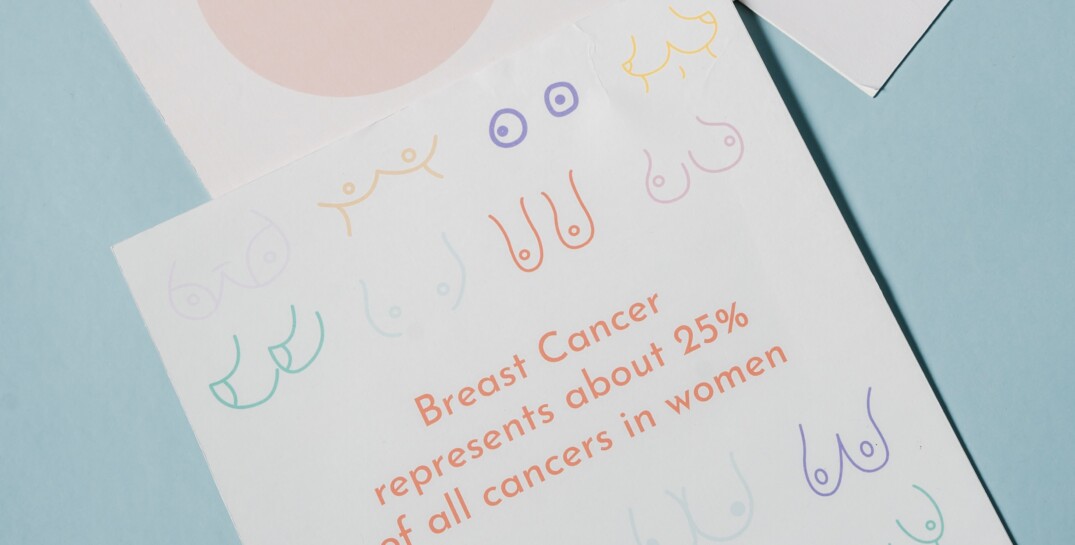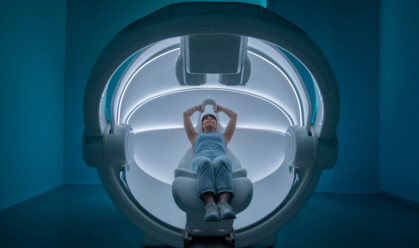AILIS – designed for dense breasts

Breast cancer in the world’s mostly commonly – diagnosed cancer. It is also the most common malignancy in women worldwide[1] and the second leading cause of cancer-related death among women[2].
Lifestyle, such as unhealthy diets, insufficient physical activity, use of tobacco and harmful use of alcohol, have all contributed to the increasing cancer burden (…) This reinforces the need to invest in both cancer prevention and cancer control – WHO experts say[3].
Dense breast, huge problem
Breast cancer detection in mammography is the most challenging in women with dense breasts.
It is estimated that nearly half of women have breasts consisting mainly of glandular tissue[4]. Such structure makes it difficult to detect cancerous changes during screening tests – both dense tissue and tumors or calcifications show up as white areas on mammography.
For that reason, the sensitivity of mammography in women with dense breast tissue drops drastically to 48%[5], and it results in 27% of undetected cases of breast cancer[6]. On the other hand, breast US has been noted to have high false-positive rates resulting in patients undergoing unnecessary biopsies[7].
AILIS team invented it
To solve that problem AILIS system, (especially) for women with dense breasts, was designed. The work on an integrated breast cancer diagnostics system started in 2016. The project is already after preclinical trials that showed a very high sensitivity of the system[8].
– Preclinical studies have shown the great potential of AILIS system. We sincerely believe it will revolutionize breast cancer diagnostics, complementing the existing breast examination methods. We want to give women an innovative system for breast health control, which will encourage them to undergo regular examinations. Furthermore, it will allow them to observe and compare the results over time and will alert them in case of detecting anomalies and the need to undergo diagnostics tests – Michał Matuszewski, CEO of AILIS says.
Personalized risk model
– Our system has its breast density algorithm that correlates with women’s breast density and allows us to personalize the diagnosis for each of them. We can create a personalized risk model by examining breast density and gathering additional patient data. During subsequent visits, our system compares the results from previous and current examinations, draws conclusions, and provides appropriate recommendations, such as to visit a doctor for enhanced diagnostics – explains Kamil Drucis, MD, Ph.D., AILIS Medical consultant in oncology.
Gabriela Matuszewska, Development Manager in AILIS, gives an exemple: – During the preclinical trials, in which nearly 200 women took part, there were situations in which our system helped save a life. For example, a 32-year-old woman with dense breasts had had a US done 6 months before the AILIS examination. That ultrasound didn’t show any abnormality, and our system detected strong anomalies indicative of malignant neoplastic changes. After a biopsy, it turned out that the cancer was already at a very advanced stage, and a mastectomy was necessary. This case shows how quickly the disease can develop and how crucial personalized diagnostics based on individual risk, not population risk are.
[1] Breast cancer now most common form of cancer: WHO taking action, 2021
[2] Breast cancer care: OECD Indicators, 2021
[3] Breast cancer now most common form of cancer: WHO taking action, 2021
[4] Discussions of Dense Breasts, Breast Cancer Risk, and Screening Choices in 2019
[5] Comparison of the performance of screening mammography, physical examination, and breast us and evaluation of factors that influence them: an analysis of 27,825 patient evaluations, 2002
[6] Breast cancer detection using sonography in women with mammographically dense breasts, 2014
[7] Artificial intelligence system reduces false-positive findings in the interpretation of breast ultrasound exams, 2021
[8] According to AILIS preclinical trials conducted on a group of nearly 200 women showed a very high sensitivity of the system, reaching 94%







